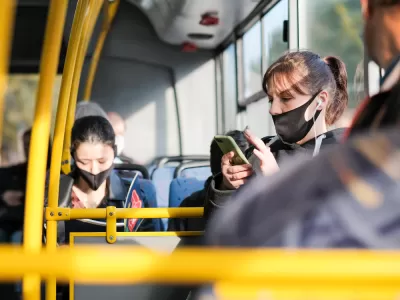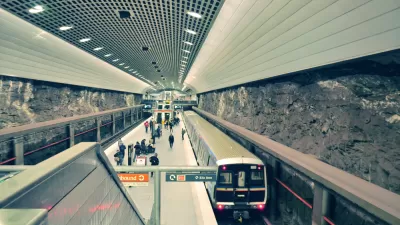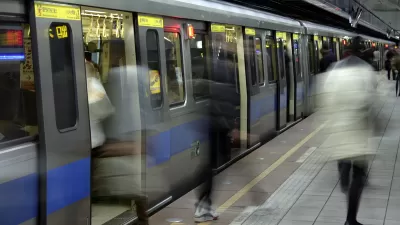While COVID-19 is a unique moment in American history, experiences from past pandemics shed light on how the pandemic might shape public transit ridership.

'What does history suggest will happen to transit ridership in America after COVID-19?' asks an article by Jake Blumgart, noting that "It’s impossible to know when, or if, ridership will ever fully recover because there’s no comparable analog to this moment in America’s modern history."
The unique challenges of our era don't compare to the 1918 flu pandemic, when remote work was essentially non-existent and people needed to leave their homes to complete daily tasks. At the same time, governments did not provide economic support, making staying at home and social distancing out of the question, and most Americans did not yet own automobiles. At that time, most transit users had no choice but to continue riding. Today, remote work and widespread car ownership allow more riders to choose a different option, despite the steps taken by transit agencies to reduce the chance of transmission on trains and buses.
As Blumgart writes, the 2003 SARS epidemic presents a more apt comparison. "A 2014 study by Kuo-Ying Wang found that for every new SARS case reported by the media, 1,200 subway users were lost. If anything remotely close to that holds, transit systems in the U.S. will have a long, long path to recovery." Facing continuing uncertainty, American transit agencies are debating a variety of options for adjusting service to better serve post-COVID travel patterns.
FULL STORY: What Does History Teach Us About Pandemics and Transit Ridership?

Alabama: Trump Terminates Settlements for Black Communities Harmed By Raw Sewage
Trump deemed the landmark civil rights agreement “illegal DEI and environmental justice policy.”

Study: Maui’s Plan to Convert Vacation Rentals to Long-Term Housing Could Cause Nearly $1 Billion Economic Loss
The plan would reduce visitor accommodation by 25% resulting in 1,900 jobs lost.

Planetizen Federal Action Tracker
A weekly monitor of how Trump’s orders and actions are impacting planners and planning in America.

Waymo Gets Permission to Map SF’s Market Street
If allowed to operate on the traffic-restricted street, Waymo’s autonomous taxis would have a leg up over ride-hailing competitors — and counter the city’s efforts to grow bike and pedestrian on the thoroughfare.

Parklet Symposium Highlights the Success of Shared Spaces
Parklets got a boost during the Covid-19 pandemic, when the concept was translated to outdoor dining programs that offered restaurants a lifeline during the shutdown.

Federal Homelessness Agency Places Entire Staff on Leave
The U.S. Interagency Council on Homelessness is the only federal agency dedicated to preventing and ending homelessness.
Urban Design for Planners 1: Software Tools
This six-course series explores essential urban design concepts using open source software and equips planners with the tools they need to participate fully in the urban design process.
Planning for Universal Design
Learn the tools for implementing Universal Design in planning regulations.
Caltrans
Smith Gee Studio
Institute for Housing and Urban Development Studies (IHS)
City of Grandview
Harvard GSD Executive Education
Toledo-Lucas County Plan Commissions
Salt Lake City
NYU Wagner Graduate School of Public Service





























